Let's talk Persians
The dignified, sophisticated and, yes, fluffy Persian cats are one of the most popular cat breeds. Could it be the lustrous fur? The subtle demeanor? It’s all of the above with this medium-size cat, who graces any household with quiet grandeur and fulfills their unofficial role as lap cat extraordinaire, preferring a quiet home to a bustling busy one.
Official name: Persian
Other names: Persian Longhair, Longhair
Origins: Iran (originally Persia)
Hair length
5 out of 5Shedding Level
4 out of 5Grooming needs
5 out of 5Energy level*
2 out of 5Vocal
1 out of 5Family pet?*
2 out of 5Compatibility with other pets
2 out of 5Can stay alone
1 out of 5Environment
2 out of 5
| Male | Female |
|---|---|
| Height | Height |
| 0 - 0 cm | 0 - 0 cm |
| Weight | Weight |
| 5 - 7 kg | 3 - 5 kg |
| Life Stage | |
|---|---|
| Kitten | Adult |
| 4 to 12 months | 1 to 7 years |
| Mature | Senior |
| 7 to 12 years | From 12 years |
Hair length
5 out of 5Shedding Level
4 out of 5Grooming needs
5 out of 5Energy level*
2 out of 5Vocal
1 out of 5Family pet?*
2 out of 5Compatibility with other pets
2 out of 5Can stay alone
1 out of 5Environment
2 out of 5
| Male | Female |
|---|---|
| Height | Height |
| 0 - 0 cm | 0 - 0 cm |
| Weight | Weight |
| 5 - 7 kg | 3 - 5 kg |
| Life Stage | |
|---|---|
| Kitten | Adult |
| 4 to 12 months | 1 to 7 years |
| Mature | Senior |
| 7 to 12 years | From 12 years |
Tailored nutrition for your Persian
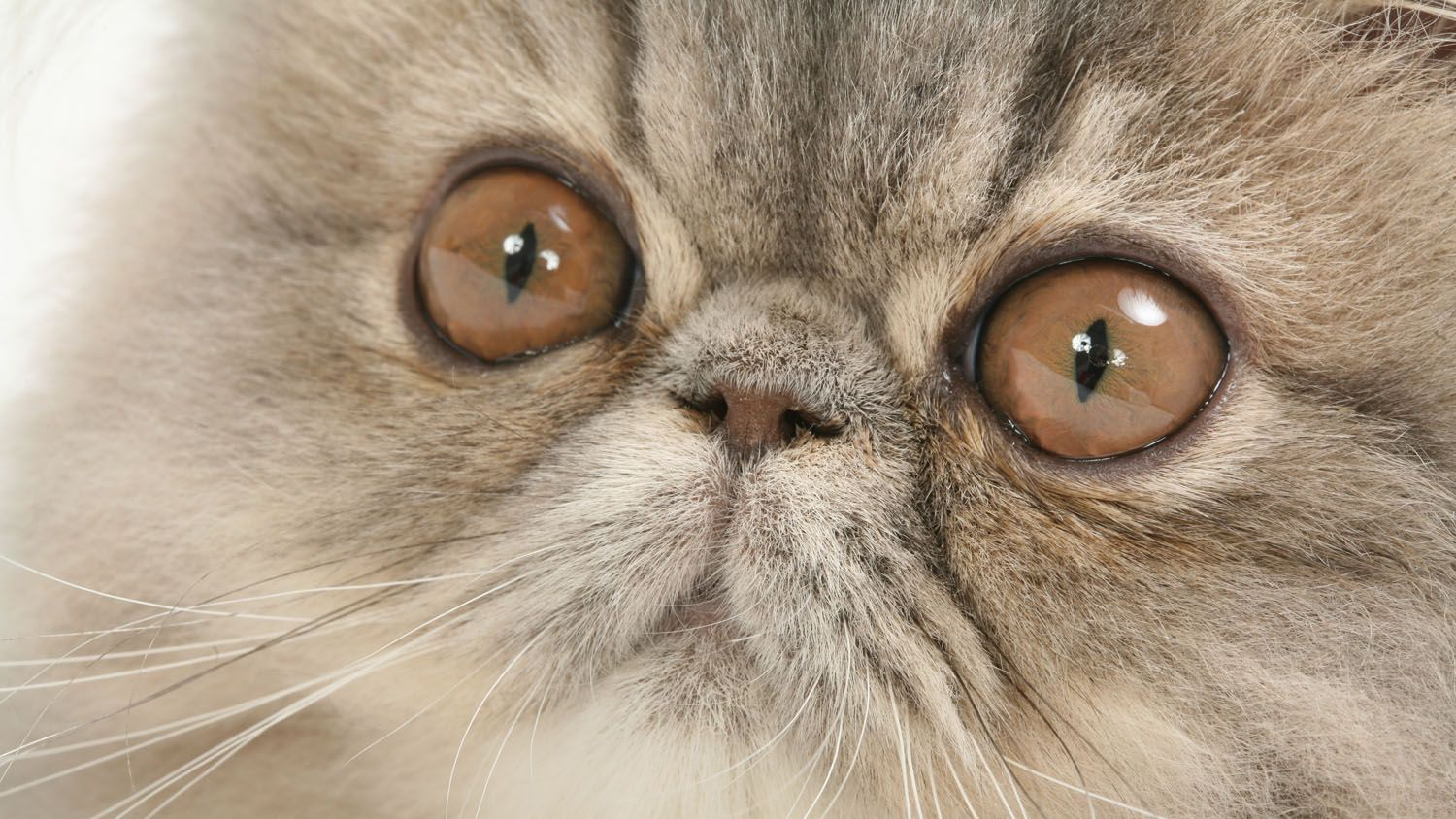
Get to know the Persian
All you need to know about the breed
Sweetness and light, the Persian is a downright delightful cat. Super soft fur, big lion paws and the merest “eek” of a meow makes them one attractive feline. The breed is overtly calm, and not one to enjoy change of any sort, they are domestic sorts in every way, shape and form.
An ancient breed, the history of the Persian cat is one that has stood the test of time. They hail from Persia (go figure), now Iran, and since the 1500s have seen their popularity spread across the globe. At present, there are more than 200 Persian varieties worldwide.
The breed is hugely popular in France, their regal appearance making a parfait accompaniment to sophisticated French culture.
As flocculent as the Persian cat may be, they don’t enjoy being fussed over and don’t, at times, like to be hugged. It may be hard to keep your paws off them, but they are an independent sort and will cuddle on their own terms. Docile and pretty easygoing, Persians are usually fine being left at home while you’re out tending to their kingdom.
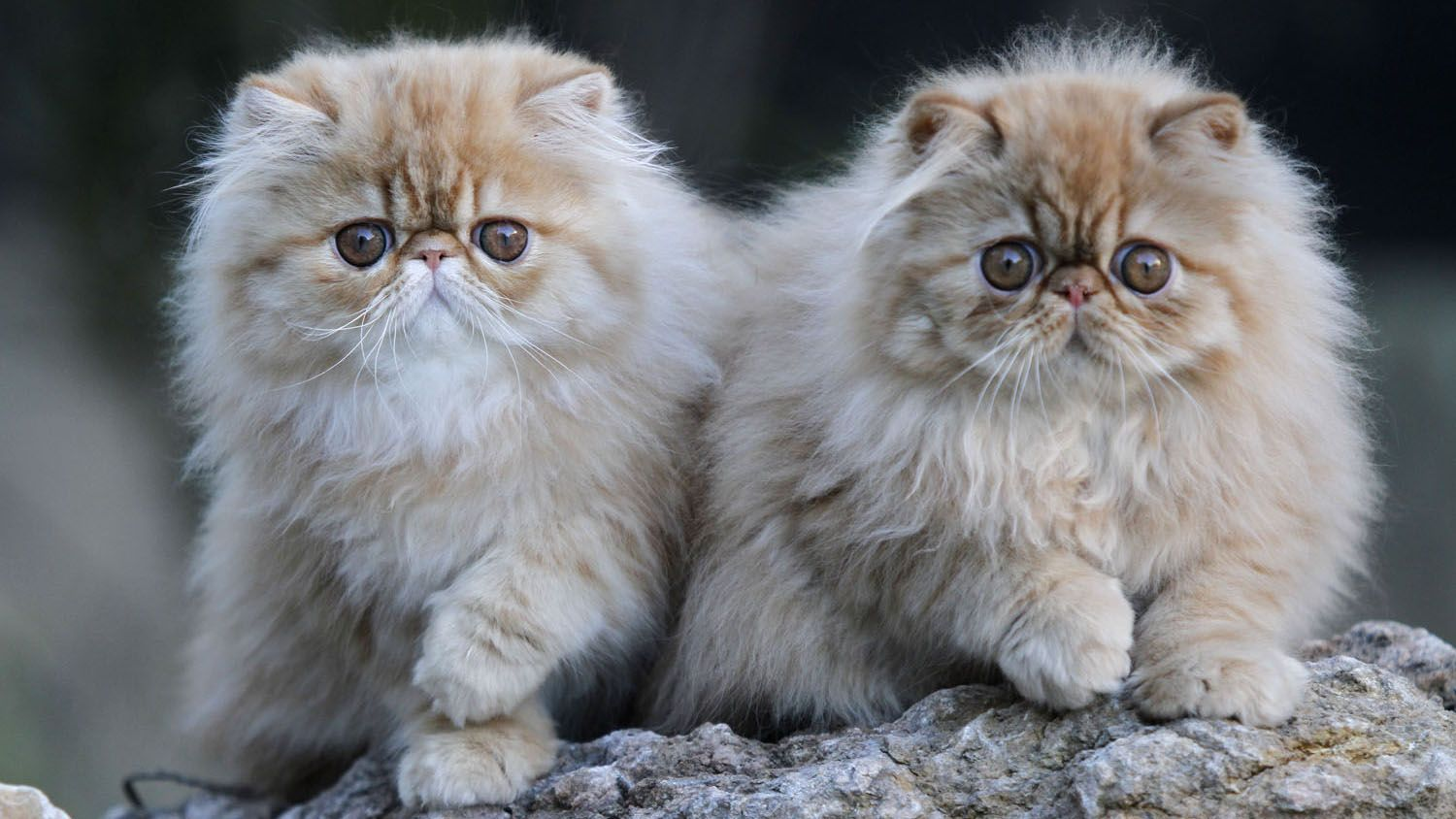
2 facts about Persians
1. Despite hailing from Persia...
Excessive heat is an issue for Persian cats. Logic would dictate that this is so, given the breed’s luscious locks, but the breed does best kept indoors out of excessive sun.
2. Top of the heap
According to the Cat Fanciers Association, North America’s premier cat club, Persians are the most popular breed in the United States and rank fourth overall in the world. The breed itself is not surprised.
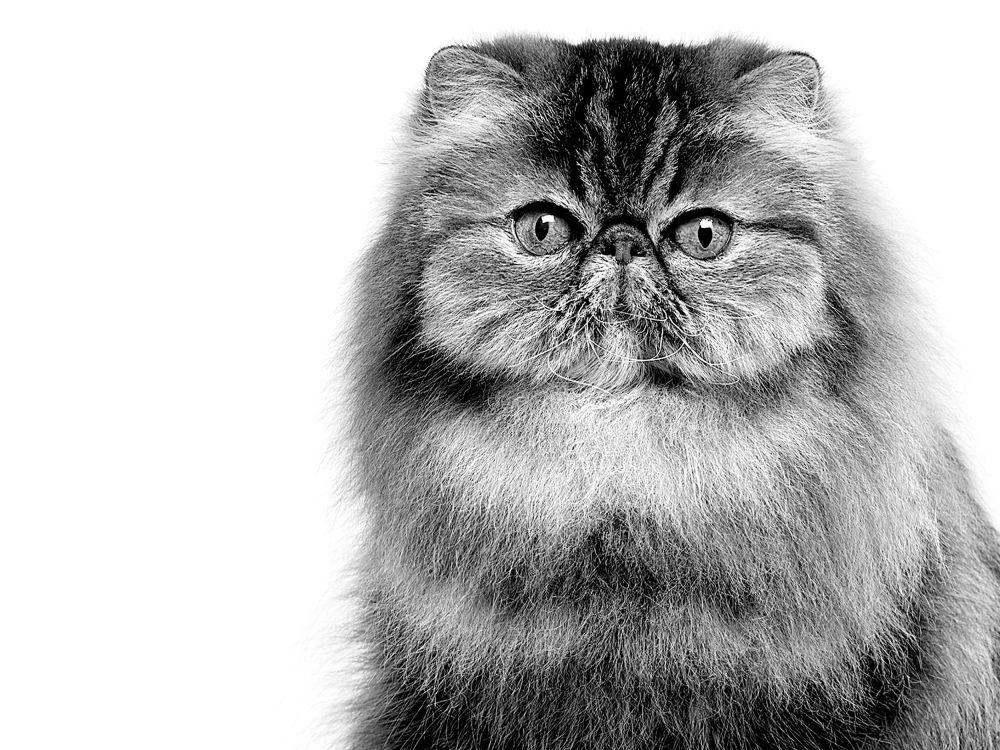
History of the breed
Sophisticated, wise, confident - the Persian cat is all of these and more. Persians were discovered by the 17th Century Italian adventurer Pietro Della Valle who first saw the cat in Persia, now modern-day Iran, and brought the cat home with him to Europe.
The breed’s popularity spread throughout the continent upon their return in the early 1600s, and breeding ensued to preserve the iconic long hair of their coat and the breed’s overall statuesque appearance. King Louis XV was quite fond of the breed, introducing it to the royal court in France in the 1700s.
The Crystal Palace cat show, held in London in 1871, further gave rise to the breed’s popularity as Queen Victoria, the monarch at the time, was hugely fond of the Persian personality.
From years of breeding, the hugely cherished Persian changed from their original appearance to their present one. For years, the breed had only shiny, silky, gray fur but the first of two genetic changes occurred in 1882, producing the Chinchilla coat, the very popular white with flecks of gray (the breed now comes in a wide array of coat colors and combinations). In 1942, another genetic change happened and the brachycephalic face emerged - a flattened appearance that has become the beloved breed we know today. The snub nose is charming for breeders and fans, but its development proved difficult for the Persian cat’s health when it comes to breathing and respiratory issues.
From head to tail
Physical characteristics of Persians
1.Ears
2.Head
3.Body
4.Tail
5.Coat
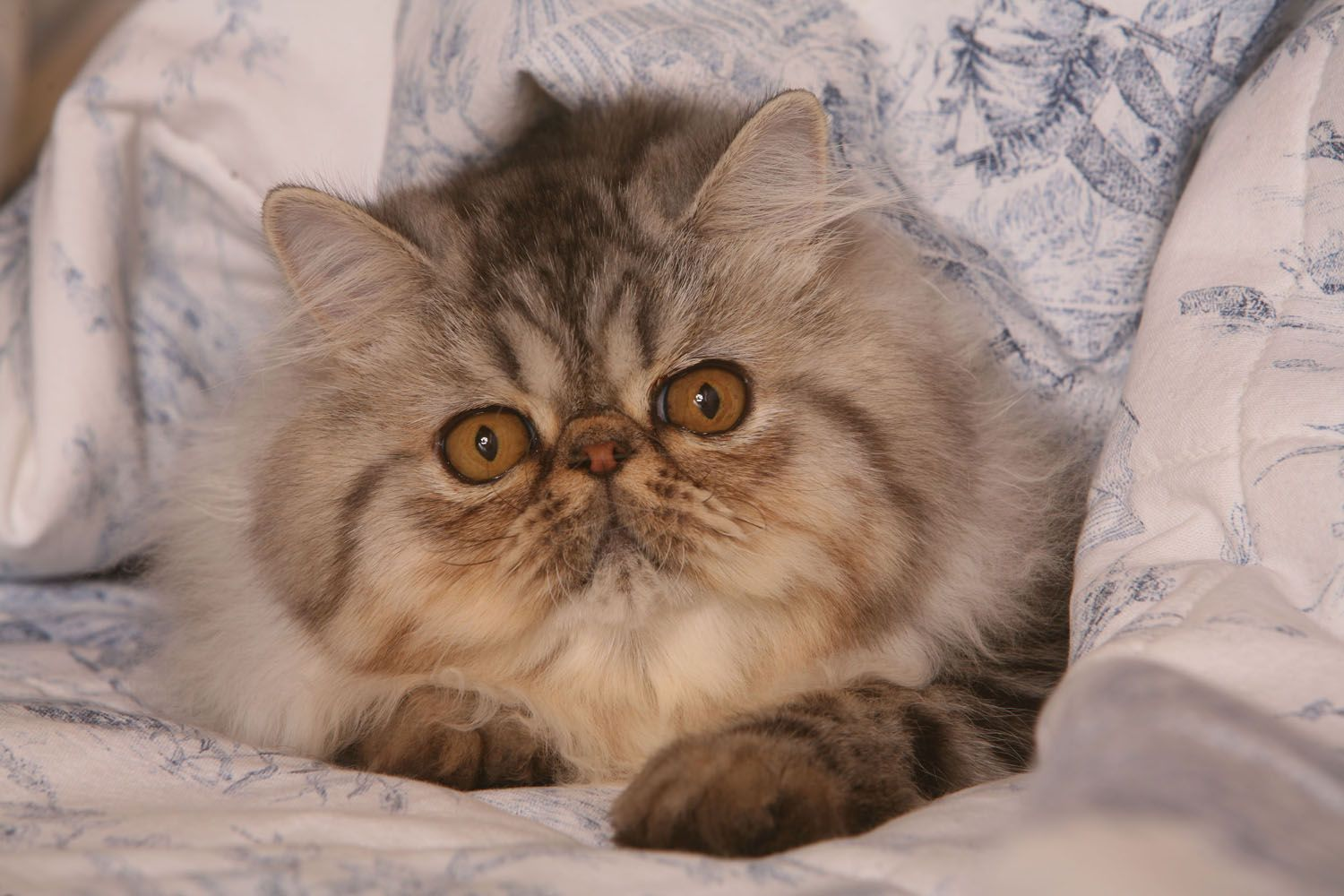
Things to look out for
From specific breed traits to a general health overview, here are some interesting facts about your Persian
They are prone to kidney disease.
A Persian’s health is generally robust but like all cats, Persians have certain maladies that are a concern; for them, it’s kidney disease, which can come in the form of polycystic, or many cysts that form inside the organ. The condition is said to occur in one out of every three Persian cats. It is very treatable with the right veterinary care, proper diet, and a decent amount of exercise for your feline.
Climbers they are not.
A Persian’s favourite pastime is accompanying you on the couch and watching the world go by as opposed to jumping, climbing and scaling to new heights around the living room. Although they do like to play as much as the next cat, they much prefer the passive comfort that furniture provides rather than dashing to and fro. Running for Persian cats is somewhat foreign; walking, preferred. After all, they hardly have to prove themselves.
Cute facial contours can prove problematic.
That elegant button nose is great to look at but also causes breathing problems for the Persian. The breed possesses what’s called a brachycephalic face, or one that’s shortened in length, giving the face and nose a pushed-in appearance. While the genetic snub nosed-change is one of the breed’s most beloved traits for breeders and fans, it can prove difficult for Persians as it relates to breathing and respiratory issues.
Healthy diet, healthier cat
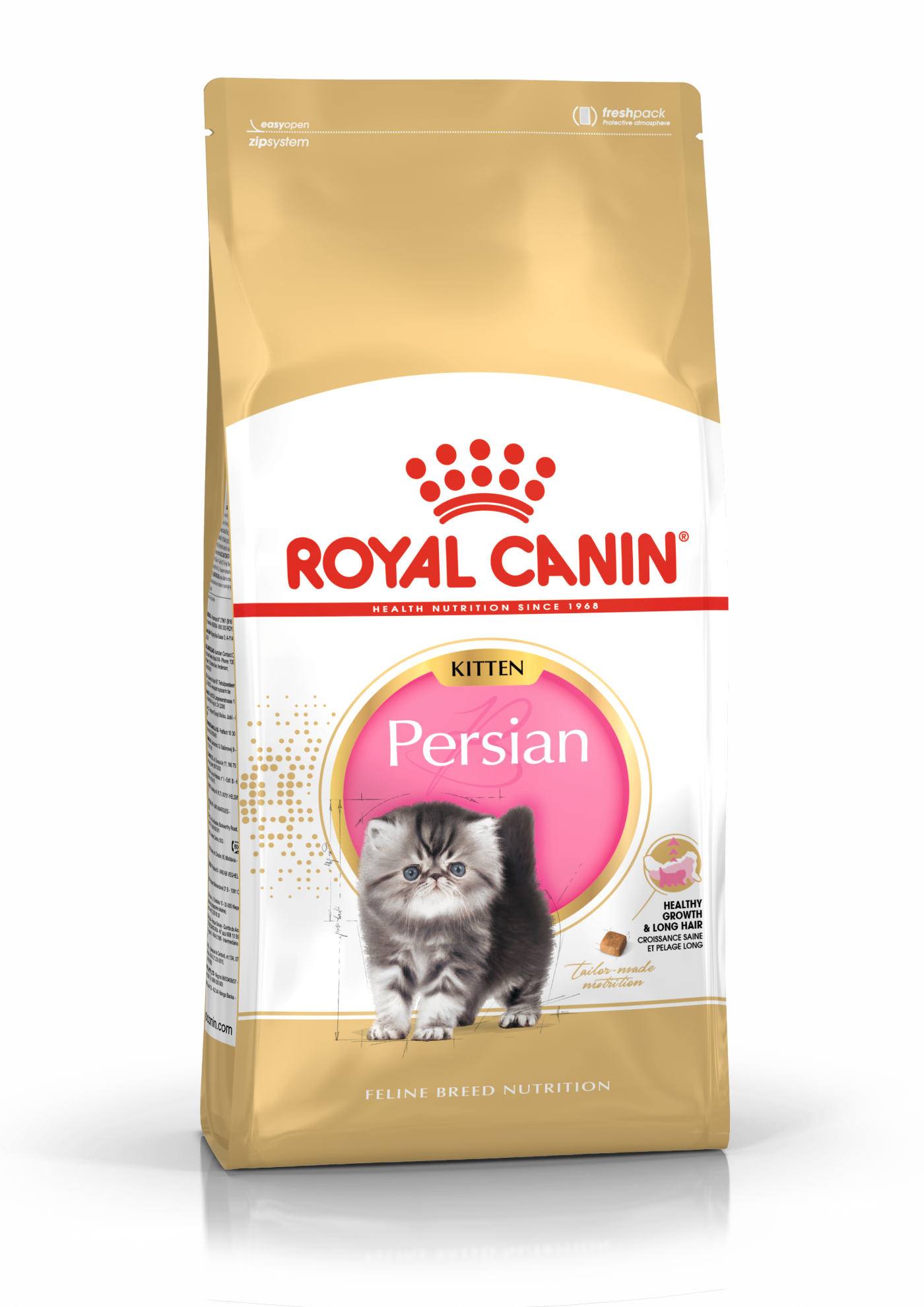
Tailored health nutrition has a fundamental role to play in maintaining the health and beauty of Persians. Food provides energy to help with vital functions and a complete nutritional formula for cats should contain an adapted balance of nutrients. Feeding them in this way will offer a diet that’s neither deficient nor excessive, both of which could have adverse effects on your cat’s health.
Clean, fresh water should be available at all times to support good urinary regularity. Cats are also naturally adapted to eating small servings - between 7 and 10 times a day. Giving them the recommended daily ration of kibble once a day will let your Persian cat regulate their own consumption.
The following recommendations are for healthy animals. If your cat has health problems, please consult your veterinarian who will prescribe an exclusively veterinary diet.
Growth is an essential stage in a kitten’s life. It is a time of big changes, discoveries, and new encounters. When it comes to their energy, protein, minerals, and vitamin requirements, a Persian kitten’s are much greater than those of an adult cat. They need energy and nutrients to maintain their body, but also to grow and build it. A kitten’s growth comes in two phases:
Construction - From Birth to 4 Months:
Weaning is the transition a kitten makes from liquid - or maternal milk - to solid food. This naturally corresponds to the time when they cut their milk teeth, at 3 to 6 weeks old. At this stage, kittens are not yet able to crunch, so a soft meal (rehydrated kibble or an adapted wet food) helps ease the transition between liquids and solids. Between 4 and 12 weeks after birth, the natural immunity a kitten receives from the mother’s colostrum - or first milk - decreases while the kitten’s immune system gradually develops. This critical time, called the immunity gap, requires a complex of antioxidants, including vitamin E, to help support their natural defences. Kittens go through an intense and particularly delicate period of growth during which they’re prone to digestive upset. Their diet at this time should not only be rich in energy to meet their essential growth needs but should also contain highly digestible protein for their digestive system that’s still maturing. Prebiotics, such as fructo-oligosaccharides, can also support their digestive health by helping to balance intestinal flora. The result? Good stool quality, all around. The kitten’s food should contain omega 3 fatty acids - EPA-DHA - which helps support the proper neuro-cerebral development.
Consolidation and Harmonisation - From 4 Months to 12 Months:
From the fourth month, a kitten’s growth slows down, so a food lower in fats is recommended. This is particularly important after a cat is sterilised. Between 4 and 7 months, a kitten’s milk teeth fall out and are replaced by permanent ones. When the adult teeth have come through, a kitten needs to eat kibble that’s big enough so they’re encouraged to crunch. Until they’re 12 months old, a Persian kittens’ immune system is still gradually developing. A complex of antioxidants, including vitamin E, can help support their natural defences during this time of big changes, discoveries and new encounters. The digestive system matures progressively, with digestive aptitudes reaching full maturity toward twelve months of age. A cat is then able to consume adult food.
The digestive system matures progressively, with digestive aptitudes reaching full maturity toward twelve months of age. A cat is then able to consume adult food.
Clean, fresh water should be available at all times to support good urinary regularity. Cats are also naturally adapted to eating small servings - between 7 and 10 times a day. Giving them the recommended daily ration of kibble once a day will let your Persian cat regulate their own consumption.
The following recommendations are for healthy animals. If your cat has health problems, please consult your veterinarian who will prescribe an exclusively veterinary diet.
Growth is an essential stage in a kitten’s life. It is a time of big changes, discoveries, and new encounters. When it comes to their energy, protein, minerals, and vitamin requirements, a Persian kitten’s are much greater than those of an adult cat. They need energy and nutrients to maintain their body, but also to grow and build it. A kitten’s growth comes in two phases:
Construction - From Birth to 4 Months:
Weaning is the transition a kitten makes from liquid - or maternal milk - to solid food. This naturally corresponds to the time when they cut their milk teeth, at 3 to 6 weeks old. At this stage, kittens are not yet able to crunch, so a soft meal (rehydrated kibble or an adapted wet food) helps ease the transition between liquids and solids.
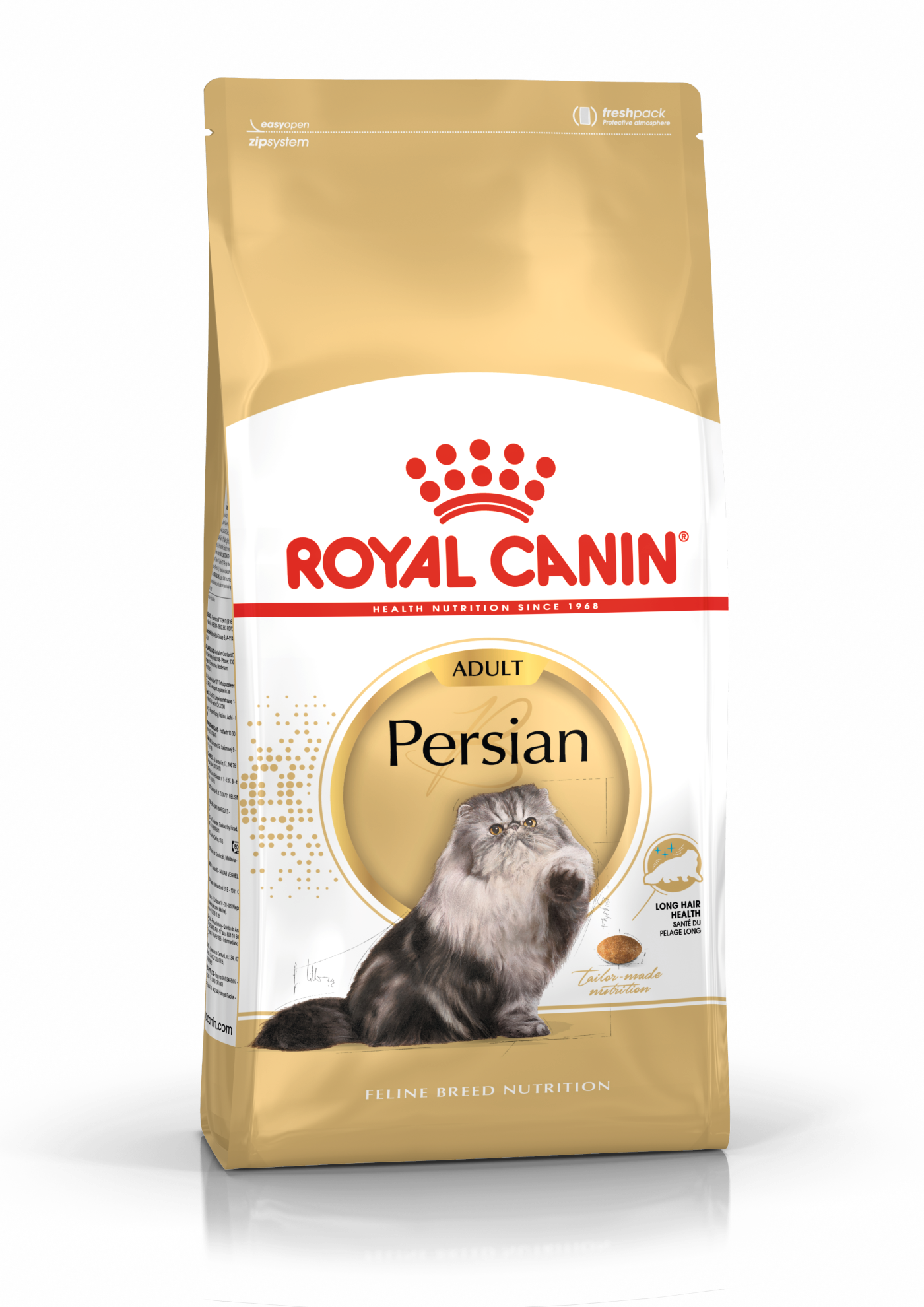
The main nutritional goals for adult Persians are:
Helping to preserve the health of their skin and the beauty of their long opulent coat, with the enriched addition of targeted nutrients that reinforce the skin’s role as a barrier, and to intensify the colour, shine, and softness of their coat
Stimulating the elimination of hair that’s ingested during grooming, thanks to selected fibers, to help reduce hairball formation. As indoor cats, Persians are relatively inactive and may spend over 30 hours a week grooming their silky coat, so often suffer from hairballs
Helping to maintain a healthy urinary tract system. The specific way the Persian’s urinary system works makes them more prone than other cats to the development of kidney stones
Supporting optimal digestion and balancing intestinal flora by using highly digestible proteins and prebiotics
Making sure that the food size, shape, and texture is suitable to the cat’s method of picking up food, which is with the underside of their tongue. The Persian has a brachycephalic jaw, marked by a broad, rounded head and a flatter profile. The food shape should maximize the contact with the tongue and improve adherence, easing the cat’s ability to grasp it

A senior cat - one over the age of 12 - may sometimes have difficulties with absorption. To maintain the weight of the ageing cat and minimise the risk of deficiency, they should be given an extremely digestible food filled with essential nutrients
As they get older, cats increasingly suffer from teeth problems, and in some senior cats, the sense of taste and smell may decline as well, which can lead to a lowered intake of food. To ensure they continue to eat enough, the shape, size, and hardness - meaning texture - of their kibble needs to be tailored to their now potentially more fragile jaw
Note that the best energy level for any cat still depends on their lifestyle, even those who are ageing. A senior cat that continues to go out regularly will benefit from a diet with a slightly higher fat content. On the other hand, ageing does not reduce an indoor cat’s risk of obesity. Their calorie intake should still be closely monitored. A food with a moderate fat content then may be optimal
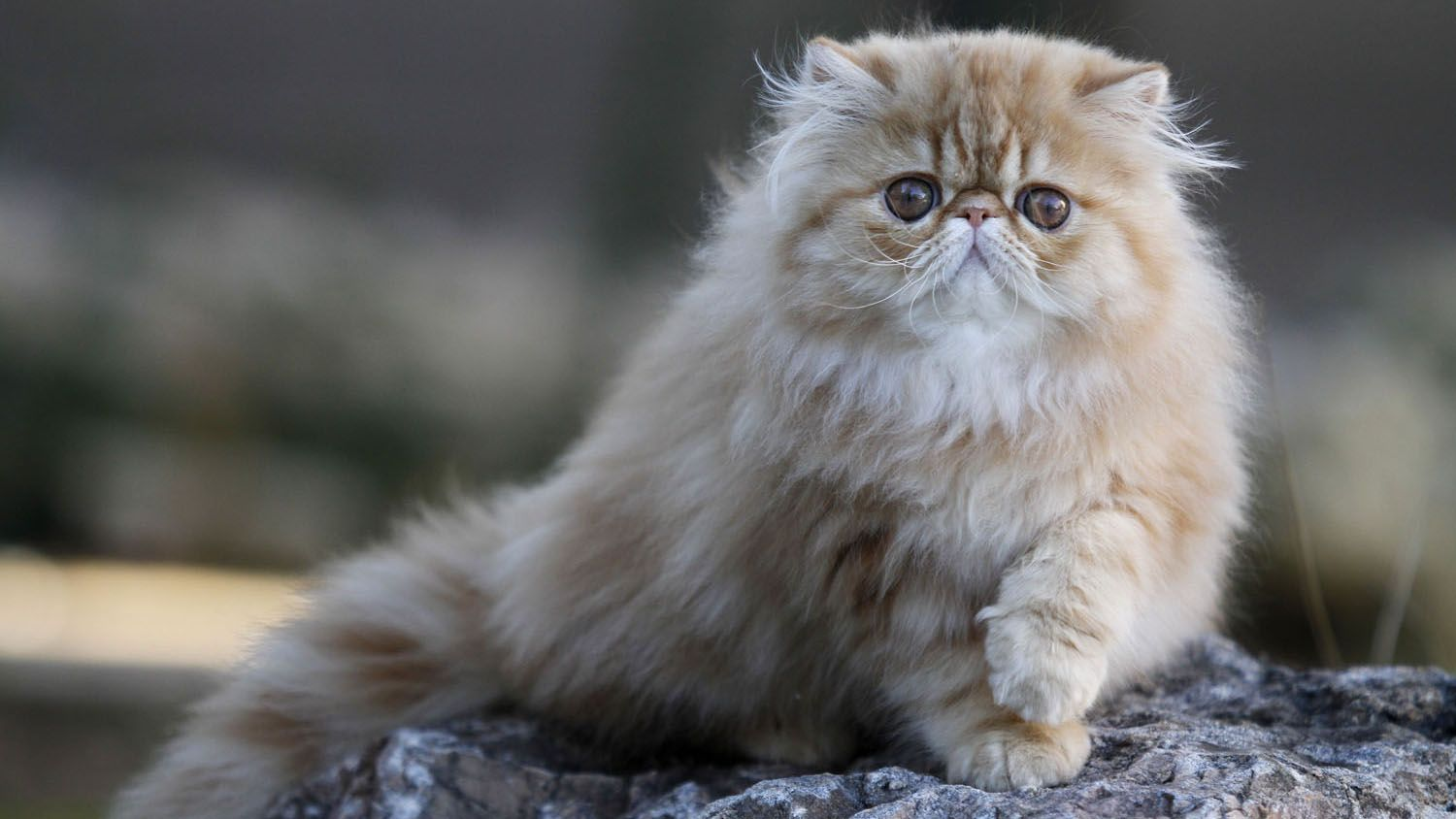
Caring for your Persian
Grooming, training and exercise tips
The Persian cat needs a good amount of activity each day like any feline and playing with your cat will help promote this. Cat toys are sold in abundance. Jingly balls and things that scatter about will keep your frisky friend moving and keep the blood flowing for optimum health. Truth be told, Persian cats do enjoy their downtime tremendously but getting their daily gymnastics in is important to keep them fit and trim.
How to groom a Persian cat? Very diligently. The breed is celebrated for their signature long hair but make no mistake, effort must be put in to keep it looking great and keep your cat healthy. To start, a daily run-through with a comb for your Persian. Doing so will help keep mats and tangles under control. Of course, trimming your Persian cat’s nails as often as is needed will help keep them healthy as well.
Training your Persian cat is a breeze, given their incredibly affable nature. This is a breed that likes to please so understanding and following commands is easy for her. Litter box, meal allowance, leave the sofa alone - they will understand it all if patient and gentle discipline is instilled. The breed is very responsive so following what you say won’t be a huge issue.
The Persian cat needs a good amount of activity each day like any feline and playing with your cat will help promote this. Cat toys are sold in abundance. Jingly balls and things that scatter about will keep your frisky friend moving and keep the blood flowing for optimum health. Truth be told, Persian cats do enjoy their downtime tremendously but getting their daily gymnastics in is important to keep them fit and trim.
How to groom a Persian cat? Very diligently. The breed is celebrated for their signature long hair but make no mistake, effort must be put in to keep it looking great and keep your cat healthy. To start, a daily run-through with a comb for your Persian. Doing so will help keep mats and tangles under control. Of course, trimming your Persian cat’s nails as often as is needed will help keep them healthy as well.
Training your Persian cat is a breeze, given their incredibly affable nature. This is a breed that likes to please so understanding and following commands is easy for her. Litter box, meal allowance, leave the sofa alone - they will understand it all if patient and gentle discipline is instilled. The breed is very responsive so following what you say won’t be a huge issue.
All about Persians
Purrrfect! The breed is everything they appear, snuggly, friendly, affable and always up for a chase after a toy or a spending quality time with you.
If a Persian cat won’t sit on your lap, no cat will. Persians are very friendly and known to be tender and dear. This breed will never have trouble showing their soft side.
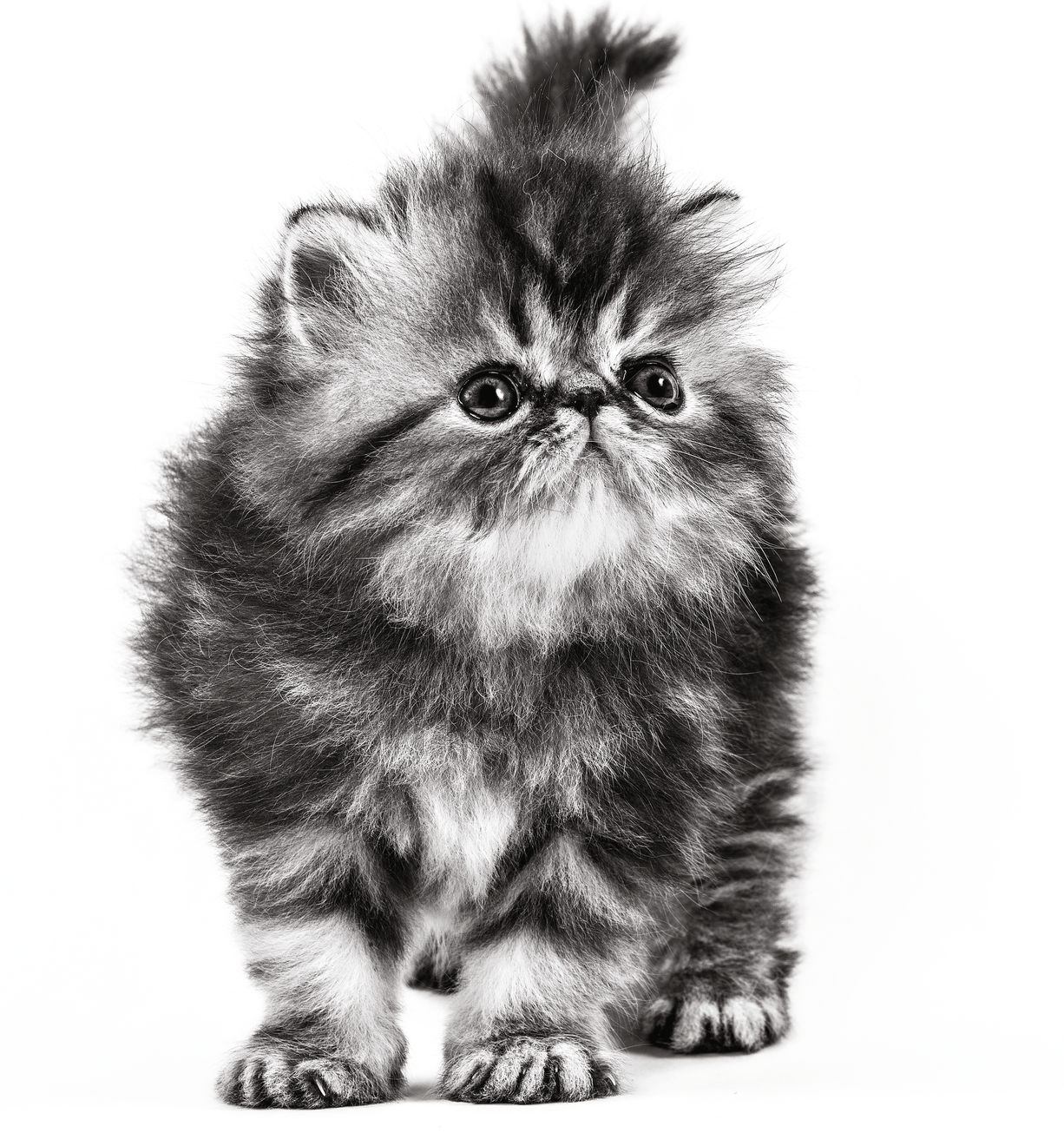
Preparing for your kitten's arrival
Discover our kitten range
Suggested Breeds
Read more on this topic
Sources
- Veterinary Centers of America https://vcahospitals.com/
- Royal Canin Cat Encyclopedia. Ed 2010 and 2020
- Banfield Pet Hospital https://www.banfield.com/
- Royal Canin BHN Product Book
Like & share this page